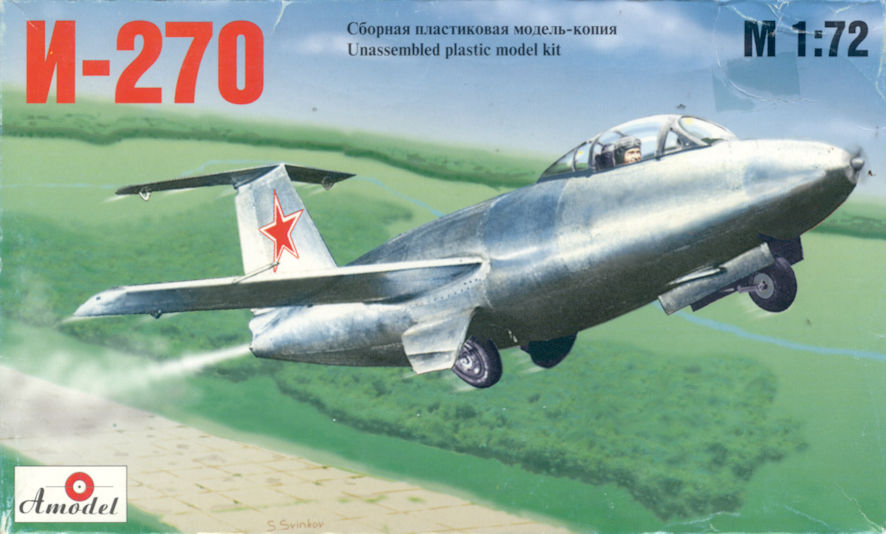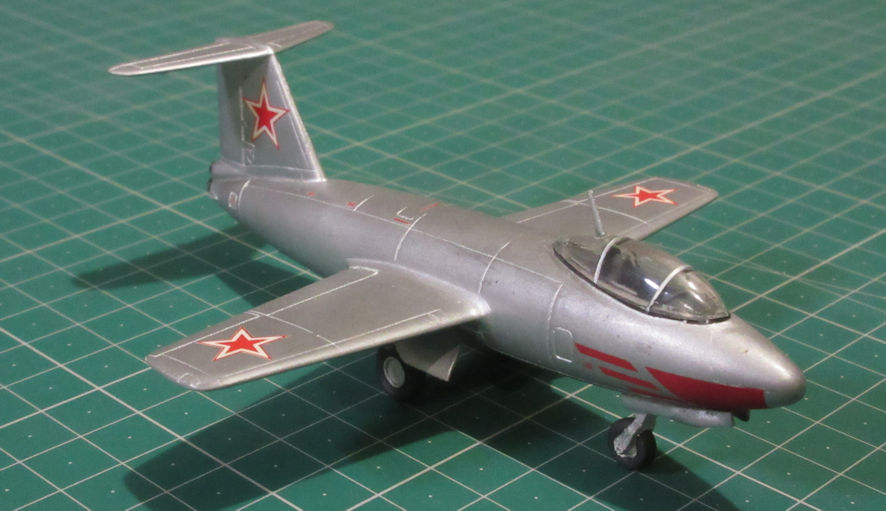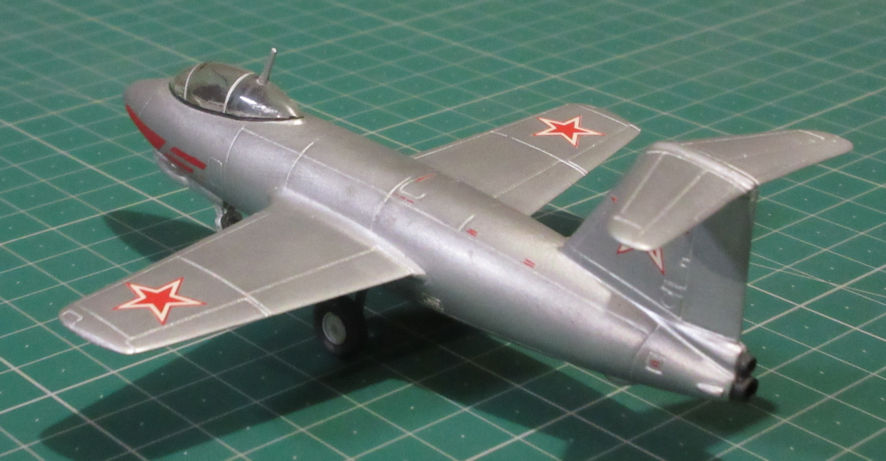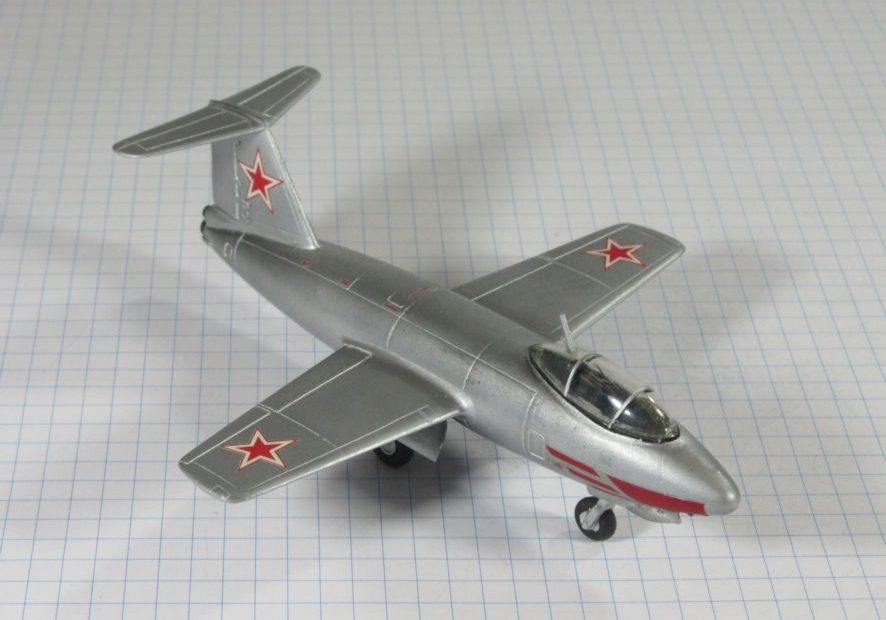Experiments into rocket propelled aeroplanes were conducted in Russia around the same time as in Germany and the Bereznyak-Isaev BI flew for the first time on 15 May 1942. It was perhaps the first rocket powered interceptor to fly but, unlike developments in Germany, it lacked the aerodynamic sophistication necessary for the new power plant and suffered from serious handling problems. Eight BIs were built in all and some were modified in an attempt to improve their performance but the project was cancelled around 1945.
Despite this, in 1945 Russian authorities issued a requirement for a rocket powered point-defence interceptor similar in concept to the Messerchmitt Me163 and the Mikoyan-Gurevich Design Bureau responded with a proposal that was designated the I-270. It’s design might have been influenced by the Messerchmitt Me263 that had been captured by the Russians although the Mikoyan design was aerodynamically simpler than the Messerchmitt, lacking Lippisch’s all-wing design and having instead a conventional wing and tail arrangement. Perhaps the significance of the Me263 to Russian design was more in the rocket motor that had the same two-chamber arrangement to give the interceptor greater flight endurance. The I-270 was the first Russian aeroplane to be fitted with an ejector seat.
Two prototypes were constructed, the first which was used for unpowered tests in 1946 (one source suggests it was not actually flown at all) and the second which had the rocket motor installed and made its first powered flight in early 1947. It appears that the second prototype was damaged after a crash and not repaired while the first prototype was also damaged in a crash landing and remained unrepaired. Whatever happened, the Russian authorities had lost interest in the manned interceptor concept because of its short endurance and handling problems.
Instead, by the late 1940s attention was shifting to using rocket propulsion in anti-aircraft missiles that were much more efficient than manned interceptors and becoming technically possible. Despite this the I-270 gave the Mikoyan Design Bureau useful experience in designing high performance fighters.

Let me start with the positive comments. This is a fairly good limited-run kit that may be a bit rough by the most sophisticated standards but all the pieces add up to a reasonable replica of an I-270. The cockpit is better than that provided for many kits (such as the Hasegawa J8M1) though you can barely see a thing for all your effort after the fuselage halves are put together. Assembly requires some care in levelling edges and lining up some of the pieces and even then it still needed a fair amount of filler to smooth out some of the imperfections. The panel lines are a bit too heavy and the details are a bit coarse and need refining. It’s one of those kits that draws out all those little modelling skills one tends to develop over the years.
Now for the whinge. Sometimes I wonder about the people who make kits like this I-270. I assume they do all kinds of research to ensure that what they offer the paying public has at least a passing resemblance to the original and that they know what they are doing when the produce the decals and instruction sheets. In this case there is nothing in the kit that makes allowance for non-Russian readers except for a paragraph of history on the side of the box. However I can still read the pictures and they are nothing but confusing. The only source of information I had for this model was the box top photo (if it is a photo), the instruction sheet and what I could find on the internet.
Let me just point out a couple of little things. The instructions show both prototypes with propellers on the nose but only one in the photos have them. The first prototype (according to the instructions) has stars on the fuselage while the photograph shows that it doesn’t and the other one does. I used the photographs and made what may be the first prototype without the little propeller and the nice red design on the nose (where, again, the photograph and the instructions fail to agree). Everything agrees that the model should be bare metal so I used Metalizer and I find the end result quite pleasing. I must be easy to please…


Leigh Edmonds
June 2002
